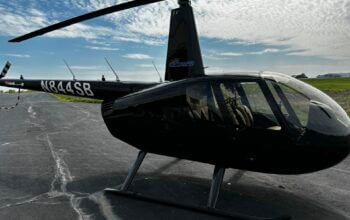Estimated reading time 6 minutes, 33 seconds.
The Canadian Business Aviation Association (CBAA) opened its annual convention in Toronto today with leading industry figures discussing a range of key issues, from the controversial European Emissions Trading System (EETS) and the ongoing development of a new regulatory framework by Transport Canada, to when the industry might expect to see a return to pre-recession financial growth.
Key Note Speaker Richard Aboulafia, vice president of analysis at the Teal Group, said that with corporate profits at healthy levels the industry was overdue for a rebound – but the ongoing “toxic combination” of worldwide events, from the continuing uncertainty in the Eurozone to the ongoing unrest in the Middle East, was making people too nervous to spend. “Ninety-five per cent of the problem at this point is psychological,” he said.
However, Aboulafia did suggest there was good reason for the industry to be hopeful, pointing to the ongoing strength of globalization and trade, the fading of populist interference, and the continuing growth of China – with much of Asia following. Additionally, he said that the percentage of business jets for sale – a key indicator of industry health – was at a good level (12.4 per cent compared to over 16 per cent mid-economic crisis).
Aboulafia said that Teal forecast industry growth of six per cent this year, eight per cent in 2013, and a compound annual growth rate of 12 per cent thereafter – with 10,249 business jets anticipated to be delivered between now and 2021. He said the industry would see the balance of sales shifting toward larger aircraft (those over $25 million), with Bombardier and Gulfstream, who already have the largest shares of the business aviation market, expected to increase their grip further.
BizAv environment ‘remains choppy’
Kathy Lee, GE Capital Canada’s CEO, echoed Alboufia’s financial analysis. “What happened in the corporate aviation business during the crisis was a perfect storm,” she told the audience. “The environment remains choppy…[but] we have to get used to living in this world of volatility.”
Lee revealed that a GE survey of 106 CFOs, across a range of industries, had found that, while they were generally optimistic about the states of their own industries, their views on the global economy were slightly negative – with the cost of doing business in Canada leading concerns.
The issue of emission charging in Europe was hotly debated following a presentation by Fabio Gamba, CEO of the European Business Aviation Association (EBAA). Gamba admitted the charge was “discriminatory” against business aviation operators. “Emissions must be tackled somehow because they are growing,” he said. But what was needed was “an agreement that incentivizes, not punishes.”
Martin Eley, director general of civil aviation for Transport Canada (TC), returned to the conference to provide an update on the organization’s workings following the recent report from the auditor general. “We will address the auditor general’s comments over the next year or so,” he said, while stressing that aviation safety was not called into question.
Regulation framework in development
Eley said that though TC has had $60 million shorn off its annual budget, with the resulting 300 “workforce adjustments” mainly affecting admin staff rather than inspectors. He said that TC’s new regulatory framework for overseeing business aviation was still in discussion, but that it was worthwhile extending the current interim order to ensure that the final result worked for both parties. “We need to find the extent we need to regulate, and no more,” he said. “Let’s take the time to make the package right for the future and live with the interim order for the time being.”
Toby Lennox, vice president of corporate affairs for the Greater Toronto Airport Authority, said that business aviation was on track for steady growth after a tough few years, and it remained “a very important part of the economic puzzle that makes up Toronto Pearson.”
Lennox said the authority foresees increasing constraints on operators over the next few years, with the result that an expansion of night slots has become a priority for the airport. “I can’t tell you how important it is,” he said. “Those operations between 12:30 and 6:30 need to be expanded. We have been working with the cbaa with others to make sure we have the capacity. We did submit a request with transport canada to increase the number of operations we could have at night. Regretably that’s still sitting on the minister’s desk.”
But Lennox warned that all operators could expect an increasing backlash in noise complaints following Nav Canada’s redesign of the Windsor-Toronto-Montreal airspace – even though the primary cause of this was commercial aviation. “There has been a dramatic spike in noise complaints because we’re starting to see aircraft over people who’ve never seen them before,” he said. “I can’t guarantee that it’s not going to be a problem over the next few years.”
The CBAA also held it’s annual general meeting at the conference, during which a new Chairman, Frank Burke, was welcomed in to take over from Rob Madden. Burke said that he and the CBAA’s president and CEO, Sam Barone, would be travelling to meet members from late June to discuss the role the organization should play to best represent the industry’s interests.
“We have made great progress on many fronts, but our greatest task is to ensure we have a large and united membership backing us as we work to solidify and build on our gains,” said Burke.








